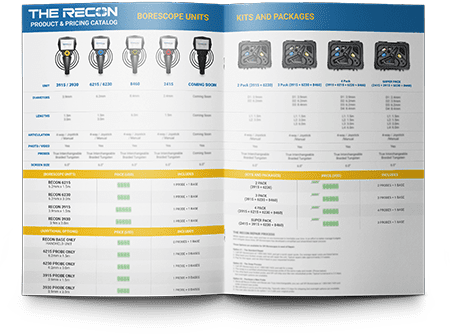The mighty and powerful diesel engine is responsible for powering some of the biggest and most heavy-duty vehicles on the land, in the sky, and in the water. At the surface, diesel engines may seem similar to the ordinary gas-powered engine, but they generate more power and torque, are more efficient, and can last longer with proper inspection and maintenance. Understanding the diesel engine and tools needed for upkeep can help you perform a proper inspection for regular maintenance, or when something has gone wrong and you need to identify the culprit.
How Are Diesel Engines Different from Gas Engines?
If you’ve performed an inspection on a gasoline-powered engine, you are going to be familiar with the basics of inspection, but maybe not quite ready to tackle the diesel engine with your articulating borescope just yet. The diesel fuel powered engine and gasoline-powered engines are both considered to be internal combustion engines, but they are different in several ways. Understanding the differences between the two will help you know what to look for during inspection with your borescope from SPI Borescopes.
In a gasoline powered engine, fuel and air are injected into cylinders where a piston compresses the mixture to turn it into an explosive form, and a small spark ignites it. That mixture creates power when it explodes that pushes the cylinder that turns the crankshaft.
Diesel engines are far less complex. Air goes into the cylinder and the piston compresses it, but at a much higher rate than a gas engine. In a diesel engine, the air is compressed by about 14 to 25 times, as opposed to a tenth of its volume like gas engines. It’s this compression that generates so much heat, and then a mist of fuel is sprayed into the cylinder and the fuel is instantly ignited without the need for that extra spark.

Inspection with an Articulating Borescope
So those are the basic differences, meaning there are a few things left off, some things added, and certain components that are under higher pressures than the gasoline engine. Because of the nature of how much compression the diesel engine runs and the importance of lubrication of a diesel engine, a major risk to the diesel engine is contamination. The first thing you need to check for with your articulating borescope is:
- Sludge buildup
- Dark and/or hazy fuel
- Corroded or pitted injectors
- Clogged and slimy filters
These are signs of contamination that can lead to major problems if not addressed. From here, the components need to be thoroughly inspected with our fully articulating borescopes that allow you to see all of the components inside the engine without the need for disassembly. Since there is such a vast variety of diesel engines and their uses, the inspection intervals will vary greatly. Even when a diesel engine is in the smallest vehicle, it should still be inspected at least once a year, more often if you drive a lot. As far as larger crafts go, there are usually guidelines in place to help you know after how many hours of use the engine needs to be inspected at. Otherwise, an inspection should be done at the first sign of poor performance and efficiency, by doing this, you can get ahead of some majorly costly issues.


